线程清理函数:
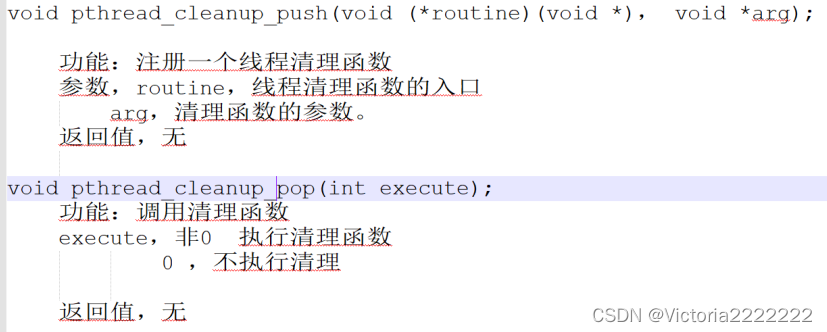 设置分离属性函数:
设置分离属性函数:

线程控制:
互斥与同步
概念:
互斥===》在多线程中对临界资源的排他性访问。
互斥机制===》互斥锁===》保证临界资源的访问控制。
pthread mutex_t mutex;
互斥锁类型 互斥锁变量 内核对象
框架:
定义互斥锁==》初始化锁==》加锁==》解锁==》销毁
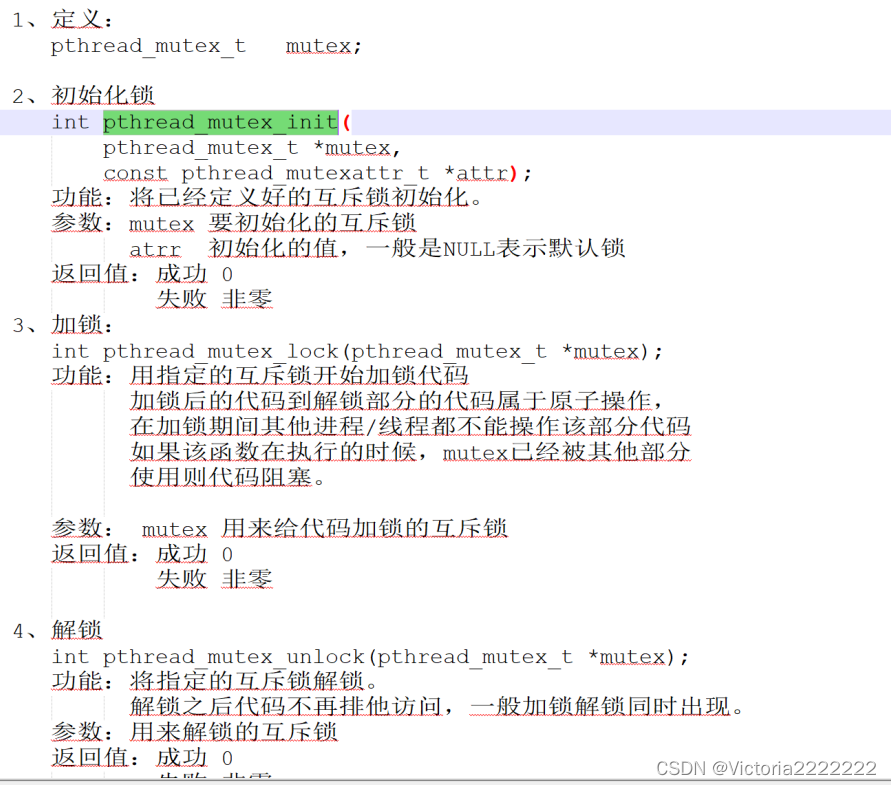
例子:
#include <stdio.h>
#include <stdlib.h>
#include <unistd.h>
#include <string.h>
#include <pthread.h>
int a = 0;
pthread_mutex_t mutex;
void* th(void* arg)
{
// pthread_mutex_lock(&mutex);
int i =5000;
while(i--)
{
pthread_mutex_lock(&mutex);
int tmp = a;
printf("a is %d\n",tmp+1);
a = tmp+1;
pthread_mutex_unlock(&mutex);
}
// pthread_mutex_unlock(&mutex);
return NULL;
}
int main(int argc, char *argv[])
{
pthread_t tid1,tid2;
pthread_mutex_init(&mutex,NULL);
pthread_create(&tid1,NULL,th,NULL);
pthread_create(&tid2,NULL,th,NULL);
pthread_join(tid1,NULL);
pthread_join(tid2,NULL);
pthread_mutex_destroy(&mutex);
return 0;
}结果:
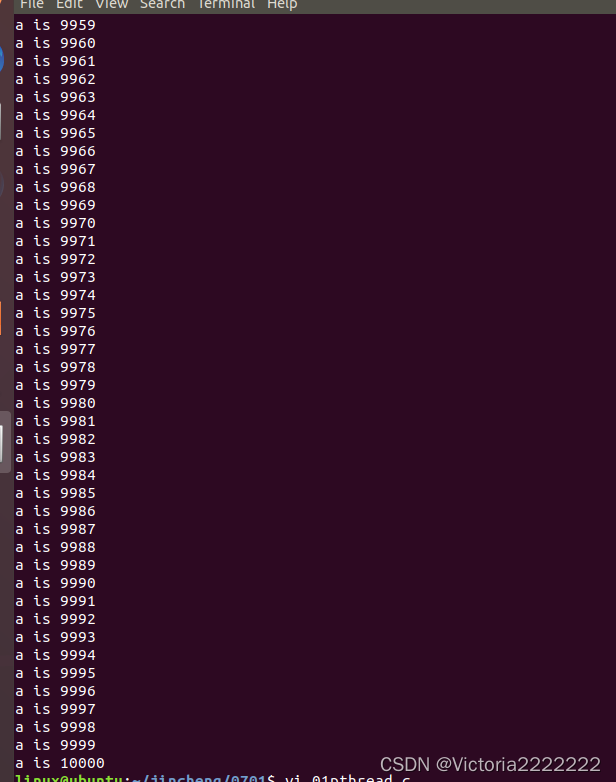
两个线程,为了让它保证一定的顺序,用这个加锁和解锁的函数,控制数字出现的顺序。
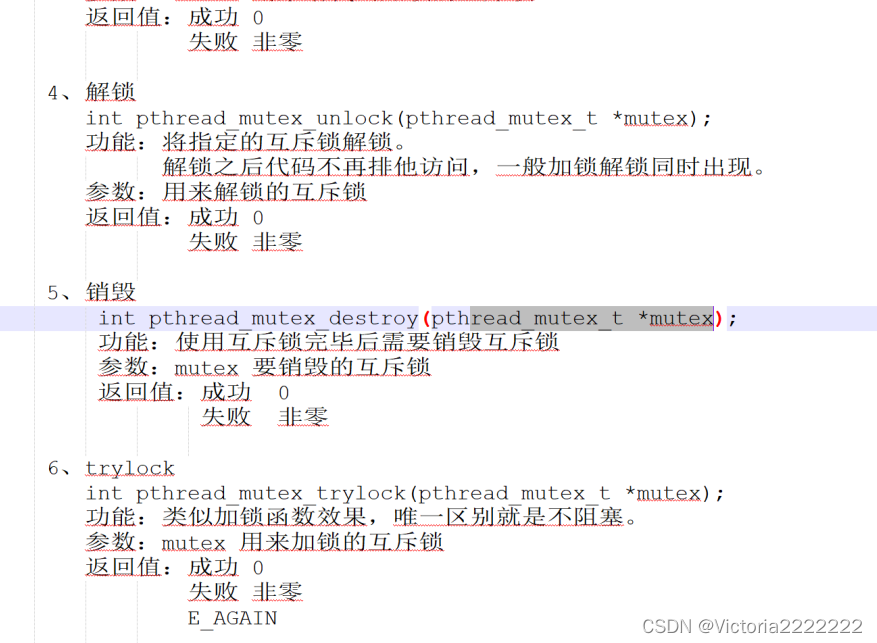

练习:十个人去银行办业务,一共三个窗口,走一个进一个走一个进一个
代码如下:
#include <stdio.h>
#include <stdlib.h>
#include <unistd.h>
#include <string.h>
#include <pthread.h>
pthread_mutex_t mutex;
int WIN = 3;
void* th(void* arg)
{
while(1)
{
pthread_mutex_lock(&mutex);
if(WIN>0)
{
WIN--;
pthread_mutex_unlock(&mutex);
printf("get win\n");
sleep(rand()%5);
printf("relese win\n");
pthread_mutex_lock(&mutex);
WIN++;
pthread_mutex_unlock(&mutex);
break;
}
else
{
pthread_mutex_unlock(&mutex);
}
}
return NULL;
}
int main(int argc, char *argv[])
{
pthread_t tid[10];
int i = 0 ;
pthread_mutex_init(&mutex,NULL);
for(i = 0 ;i<10;i++)
{
pthread_create(&tid[i],NULL,th,NULL);
}
for(i = 0 ;i<10;i++)
{
pthread_join(tid[i],NULL);
}
pthread_mutex_destroy(&mutex);
return 0;
}结果为:
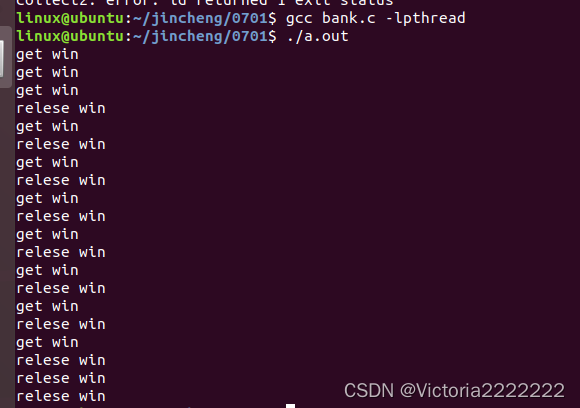
注意:

线程的同步===》同步
===》有一定先后顺序的对资源的排他性访问。
原因:互斥锁可以控制排他访问但没有次序
linux下的线程同步===》信号量机制===》semaphore.h posix
sem_open();
信号量的分类:
1.无名信号量==》线程间通信
2.有名信号量==》进程间通信
框架:
信号量的定义===》信号量的初始化==》信号量的PV操作===》信号量的销毁。
semaphore
1.信号量的定义:
sem_t sem;
信号量的类型 信号量的变量
2.信号量的初始化:

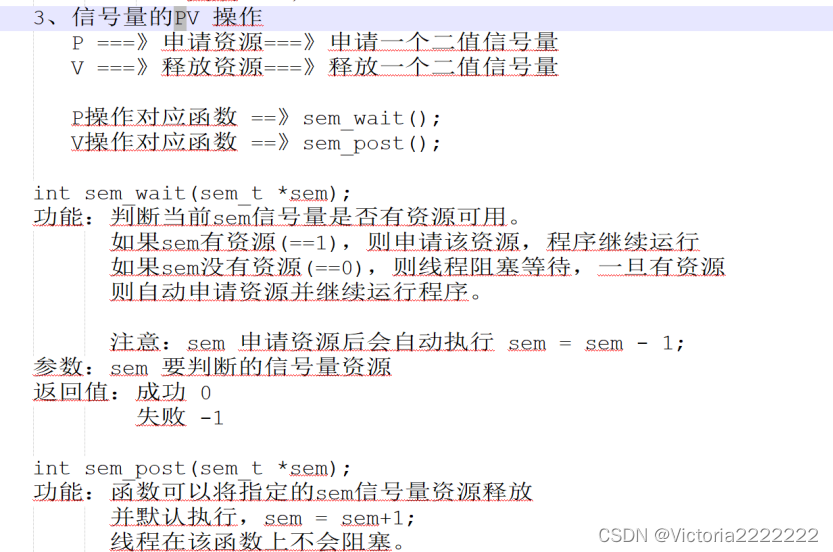

例子:
#include <stdio.h>
#include <stdlib.h>
#include <unistd.h>
#include <string.h>
#include <pthread.h>
#include <semaphore.h>
sem_t sem_H,sem_W;
void* th1(void* arg)
{
int i =10;
while(i--)
{
sem_wait(&sem_H);
printf("hello");
fflush(stdout);
sem_post(&sem_W);
}
return NULL;
}
void* th2(void* arg)
{
int i =10;
while(i--)
{
sem_wait(&sem_W);
printf(",world\n");
sleep(1);
sem_post(&sem_H);
}
return NULL;
}
int main(int argc, char *argv[])
{
pthread_t tid1,tid2;
sem_init(&sem_H,0,1);
sem_init(&sem_W,0,0);
pthread_create(&tid1,NULL,th1,NULL);
pthread_create(&tid2,NULL,th2,NULL);
pthread_join(tid1,NULL);
pthread_join(tid2,NULL);
sem_destroy(&sem_H);
sem_destroy(&sem_W);
return 0;
}结果为:

























 2983
2983

 被折叠的 条评论
为什么被折叠?
被折叠的 条评论
为什么被折叠?








